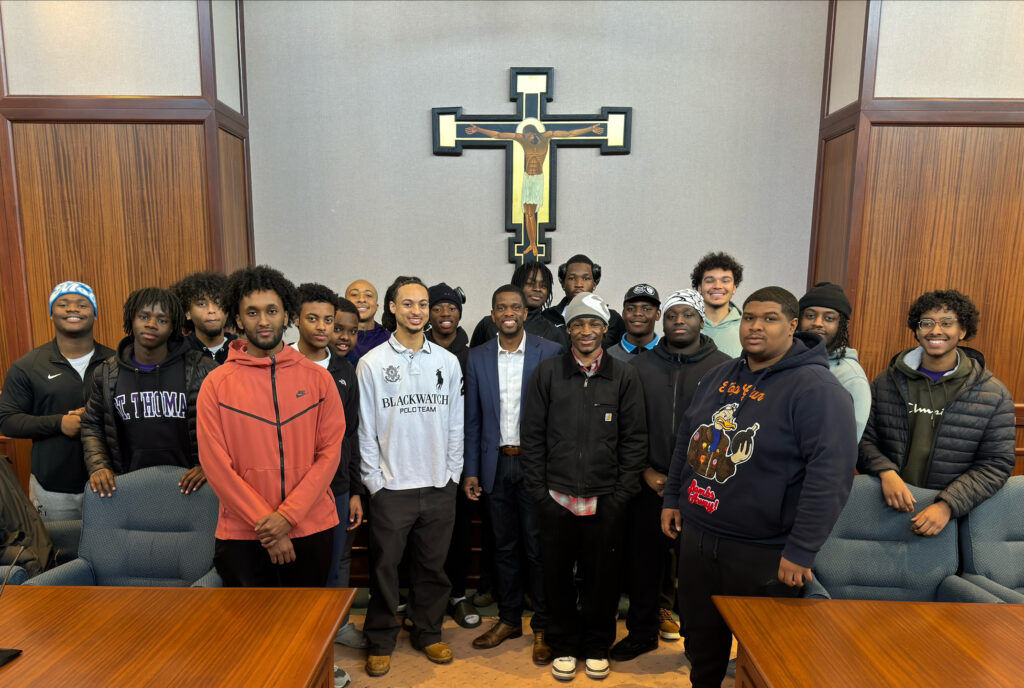Discussions under way regarding feasibility of medical school
I want to bring to the attention of the St. Thomas community an evolving discussion between Allina Hospitals & Clinics and the University of St. Thomas about the feasibility of collaborating in the creation of a new medical school to educate and train primary care physicians for Minnesota.
Allina and St. Thomas have been discussing for several months the challenges facing the health care industry, including the looming physician workforce shortage. Those discussions ultimately converged around the concept of a new model for a medical school, and Allina is interested in further exploring a partnership with St. Thomas.
I will discuss this issue at the annual meeting of the St. Thomas faculty at noon today, May 8, in O’Shaughnessy Educational Center auditorium.
On Thursday, the Board of Trustees at St. Thomas will have its first discussion regarding these issues and will decide whether to authorize a feasibility study with Allina. The executive committee of the Allina board also will discuss a feasibility study at its meeting on Wednesday.
Allina, one of the region’s largest and most-respected health care providers, believes the medical schools at the University of Minnesota and Mayo Clinic are not producing enough primary care physicians to meet the growing demand. Allina also believes the situation will grow more acute because of population growth in this region and the increasing number of retirees who will need health care in the years ahead.
A St. Thomas-Allina collaboration in the establishment of a new medical school would be unique in Minnesota and could be similar in some respects to the medical school partnership between Cleveland Clinics and Case Western Reserve University.
The school would be small, with up to 40 students in the first year’s class, and education and training would occur at Allina facilities, utilizing Allina physicians and other personnel. St. Thomas would not have to construct a new building on one of its campuses or find space in an existing campus building for this project, as we have done for every other new educational program that we have established. The medical school would be another option for St. Thomas pre-med students who want to pursue a medical career.
I want to emphasize here that St. Thomas has no interest in or intention of competing with the University of Minnesota in providing medical education. Allina has been clear, as well, that it greatly values its relationship with the University of Minnesota and that it believes any new medical school would complement – not compete with – what the university offers.
Allina would bring much strength to a collaboration. A not-for-profit system, Allina owns and operates 11 hospitals, 65 clinics, hospice services, pharmacies and emergency medical transportation services in Minnesota and western Wisconsin, with more than 2.5 million patient visits a year. For more information about Allina, see www.allina.com.
Allina is impressed with St. Thomas’ academic strengths in health care education, including basic science and pre-med programs at the undergraduate level and three programs in our Opus College of Business – a Health Care MBA; the Center for Health and Medical Affairs, which offers continuing education programs for medical professionals; and the National Institute of Health Policy, which offers a neutral forum for stakeholder collaborations on health care policy issues.
Many, many questions remain about the project, including what a business plan would look like and how much money might need to be raised. Those are the kinds of questions that would best be answered in a feasibility study that St. Thomas and Allina would conduct jointly.
In the meantime, I welcome your comments.






